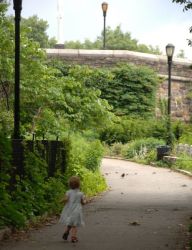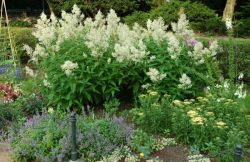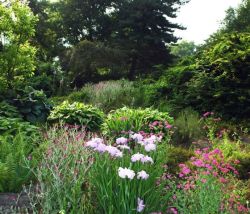Fort Tryon Park
PARKS & RECREATION INTRODUCES “PARK OF THE MONTH”
Tuesday, April 5, 2005
No. 026
http://www.nyc.gov/parks
The five boroughs of New York City are crammed with green spaces both big and small, from 2,765-acre Pelham Bay Park in the Bronx to dozens of playgrounds and sitting areas smaller than a quarter-acre. In between are hundreds of little-known properties that offer unique sights and activities for residents lucky enough to have found them.
Parks & Recreation’s newest website feature, "Park of the Month," will introduce some of these "secret gardens" to curious New Yorkers and visitors alike. A link to the highlighted park will be available on Parks’ website, www.nyc.gov/parks, and the dedicated page will include panoramic and still photos, an interactive map, historical and press information, and links to capital projects and inspections.
"With parkland blanketing nearly 14 percent of New York City, there’s no shortage of places to explore nature, play sports, or just relax," said Parks & Recreation Commissioner Adrian Benepe. "The ‘Park of the Month’ feature will help New Yorkers discover the hidden gems that are theirs to discover and enjoy."
The inaugural Park of the Month, which will appear on www.nyc.gov/parks for the month of April, is Heather Garden in North Manhattan’s Fort Tryon Park. This historic, three-acre haven of more than 2,000 heath and heather plants and year-round flora is perched high above the picturesque Hudson River, offering unparalleled views of the river and the New Jersey Palisades.
"The gorgeous, historically rich Heather Garden is one of the few free public gardens of its size, yet so few people outside of Washington Heights are familiar with it," said Commissioner Benepe. "We hope that ‘Park of the Month’ will open New Yorkers’ eyes to the diversity of our park system, to the green treasures hidden in our own backyard."
Fort Tryon Park, an official City landmark, also houses the Cloisters and the Jacob Koppel Javits and Anne Loftus Playgrounds. Fort Tryon, designed by the esteemed Olmsted Brothers architecture firm, was dedicated to the City by John D. Rockefeller, Jr. in 1935. The garden and its surrounding park have been significantly restored over the last 20 years, thanks to a public-private partnership.
Check out your park's Vital Signs
Clean & Safe
Green & Resilient
Empowered & Engaged Users
Share your feedback or learn more about how this park is part of a
Vital Park System









